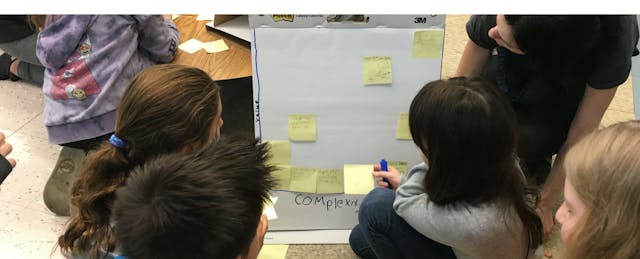Using waste to heat homes or sitting on park benches that detect air quality (while also charging phones) are just a few examples of what it means to live in a Smart City.
In countries such as South Korea and the United Arab Emirates, designing a smart city might mean planning and developing brand new cities from scratch. But for places like New York City, which in 2016 was named the “Best Smart City” by the Smart City Expo World Congress in Spain, making a city smarter means boosting interconnectivity. In either case, creating smart cities is not only for architects and technologists. Students in both K-12 and the university space are increasingly involved in building smarter communities by planning and programming technology, analyzing data and cultivating design thinking methodologies as part of research groups or special programs.
One of these programs is Exponential Education (also known as Moonshot), run by Senior Google Engineer PM, Katy Kasmai. When she is not developing with Google, she spends her time with K-12 students helping them create what she calls “10x solutions” to complicated problems. “These are high-impact, high-value solutions that are also very complex to implement,” says Kasmai, “but if implemented, have the potential for exponential value and can change things in an immeasurable way.”
Her program works to help students rekindle their imaginations so they can think creatively about solving community issues. “The problems of today and tomorrow are not solvable with yesterday's mindset,” says Kasmai.

In one of her introductory lectures, she uses Elon Musk’s Mars colonization efforts to set the tone before the students brainstorm ideas to solve climate change. She then asks students categorize their solutions based on difficulty level and value-added before putting them in groups to make their final designs. She calls this process an Exponential Sprint. “Exponential Sprint is a specially formulated design sprint to get teams ideating and prototyping 10x solutions to some of our most difficult challenges,” explains Kasmai.
She hopes that this type of curriculum can turn classrooms turn into K-12 incubators, where “kids are forming impactful start-ups by the time they are in high-school.” In her opinion, the current education system’s emphasis on testing should shift to real world problem-solving.
“The future depends on the ability of cities to adapt to changes and remain sustainable. This high level of adaptiveness requires high levels of creativity,” says Kasmai. “It only makes sense to enable the kids with the opportunity to create their future.”
Kasmai explains that building a smart city is not only about creating a technological space. “We are not advocates of any particular technology, in fact, some of the solutions might not require technology,” she says.
This need for creative thinking beyond technology is a sentiment the Managing Director of the Smart Cities conference, Simon Sylvester-Chaudhuri, shares. For Sylvester-Chaudhuri technology can help the development of the city, but it is not the final solution. “Initially the movement was around technology and enabling cities with tech to be smart,” explains Sylvester-Chaudhuri. “But our goal is to change that dialog to encompass more than technology because we need to explore how energy mobility, transportation, security, healthcare, and tourism can be used to improve citizen’s lives through technology.”
Sylvester-Chaudhuri will be bringing groups from New York University, Massachusetts Institute of Technology, Columbia University, Carnegie Mellon and several other institutions into the conference to share their work exploring urban solutions to problems like climate change, population growth, energy and resources scarcity. Sylvester-Chaudhuri says it is important that youth like the university students and those in Kasmia’s Moonshot program are a part of urban development and planning. “Sometimes experts are the worst people to think of solutions; it is nice to have fresh minds.”
Moonshot is an open-source curriculum, and Kasmai intends to keep it that way. The goal of her work, she says, is not monetary but to use education to give kids a purpose. “This program is about a lot more than academics,” she says, “this program is about the future the humanity and the happiness of kids.”


